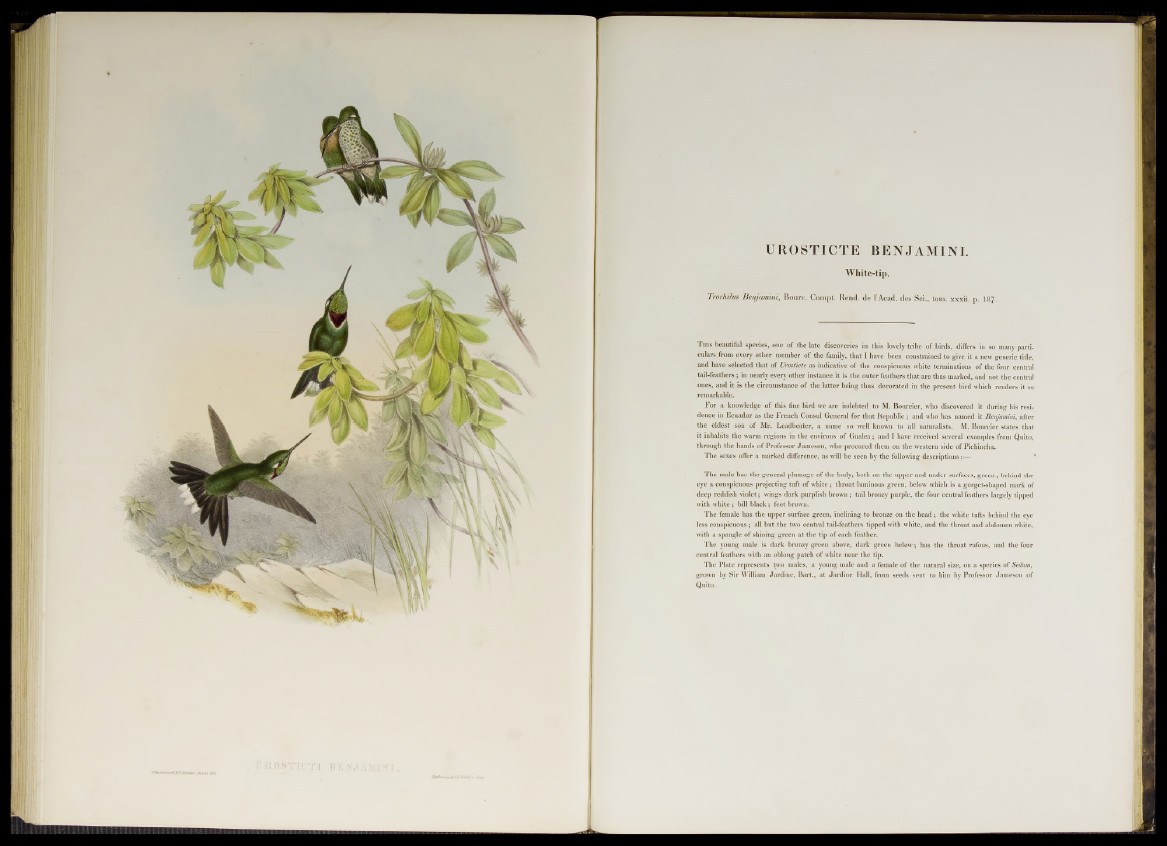
UROSTICTE BENJAMINI .
White-tip.
Trochilus Benjamini, Bourc. Compt. Rend, de l’Acad. des Sci., tom. xxxii. p. 187.
This beautiful species, one of the late discoveries in this lovely tribe of birds, differs in so many particulars
from every other member of the family, that I have been constrained to give it a new generic title,
and have selected that of Urosticte as indicative of the conspicuous white terminations of the four central
tail-feathers ; in uearly every other instance it is the outer feathers that are thus marked, and not the central
ones, and it is the circumstance of the latter being thus decorated in the present bird which renders it so
remarkable.
For a knowledge of this fine bird we are indebted to M. Bourcier, who discovered it during his residence
in Ecuador as the French Consul General for that Republic; and who has named it Benjamini, after
the eldest son of Mr. Leadbeater, a name so well known to all naturalists. M. Bourcier states that
it inhabits the warm regions in the environs of Gualea; and I have received several examples from Quito,
through the hands of Professor Jameson, who procured them on the western side of Pichincha.
The sexes offer a marked difference, as will be seen by the following descriptions:—
The male has the general plumage of the body, both on the upper and under surfaces, green; behind the
eye a conspicuous projecting tuft of white; throat luminous green, below which is a gorget-shaped mark of
deep reddish violet; wings dark purplish brown; tail bronzy purple, the four central feathers largely tipped
with white ; bill black; feet brown.
The female has the upper surface green, inclining to bronze on the head; the white tufts behind the eye
less conspicuous; all but the two central tail-feathers tipped with white, and the throat and abdomen white,
with a spangle of shining green at the tip of each feather.
The young male is dark bronzy green above, dark green below; has the throat rufous, and the four
central feathers with an oblong patch of white near the tip.
The PI ate represents two males, a young male and a female of the natural size, on a species of Sedum,
grown by Sir William Jardine, Bart., at Jardine Hall, from seeds sent to him by Professor Jameson of
Quito.